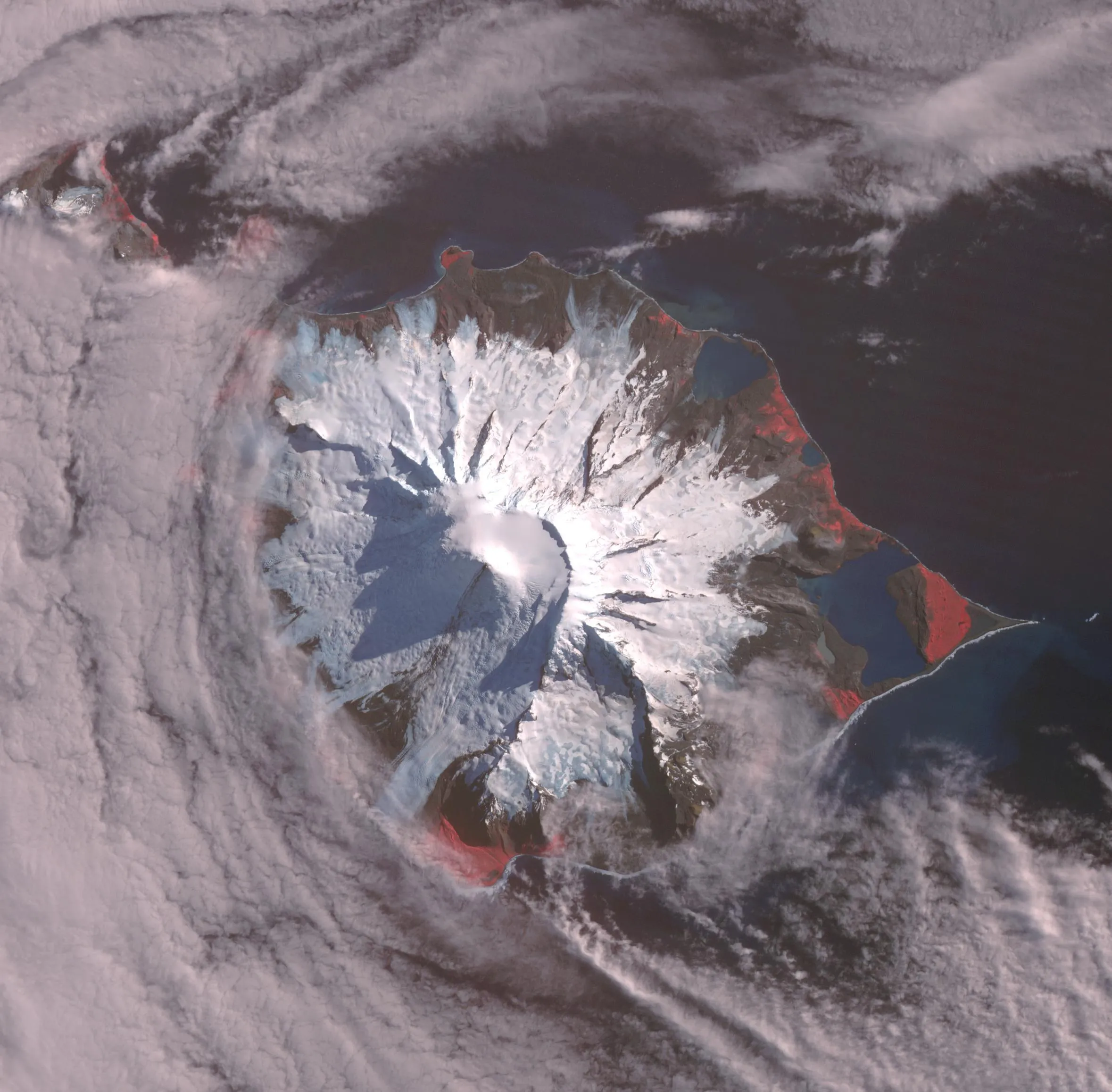Heard Volcano, a remote Australian territory nestled in the vast southern Indian Ocean, has long been a subject of geological interest. Its isolation and active nature make it a perfect target for observation from space, providing invaluable data for scientists studying Earth's dynamic processes.
A Glimpse from Orbit: Heard Volcano

This striking image showcases Heard Volcano, precisely located at 53 degrees south latitude and 73.5 degrees east longitude. The image was captured on March 18, 2025, covering a significant area of approximately 39.7 by 40.4 kilometers.
Geology of a Remote Giant
Heard Island is an Australian Territory known for its rugged volcanic landscape. It comprises two primary volcanic structures: the larger Big Ben and the smaller Mt. Dixon. The island's most prominent feature, Mawson Peak, an active vent, resides within a significant 5-6 kilometer-wide caldera. This caldera is notably breached towards the southwest side of Big Ben.
The island's volcanic history is marked by intermittent eruptions, with activity recorded as far back as 1910. The latest confirmed eruption occurred relatively recently, in May 2023, underscoring the volcano's continued dynamism.
The Eye in the Sky: ASTER and Terra
The Advanced Spaceborne Thermal Emission and Reflection Radiometer (ASTER) instrument, onboard NASA's Terra satellite, is responsible for acquiring this detailed view. Terra, a multi-national NASA scientific research satellite, is dedicated to studying Earth's land, atmosphere, and oceans. ASTER, one of its five instruments, is crucial for monitoring Earth's surface and provides high-resolution images of various features, including volcanoes, glaciers, and vegetation.
Satellite imagery like this from ASTER and Terra provides critical insights into remote and often inaccessible regions of our planet. It allows scientists to monitor volcanic activity, track changes in landforms, and contribute to our understanding of Earth's complex geological systems without the need for dangerous on-site expeditions. This continuous observation from space is vital for hazard monitoring and long-term environmental studies.




